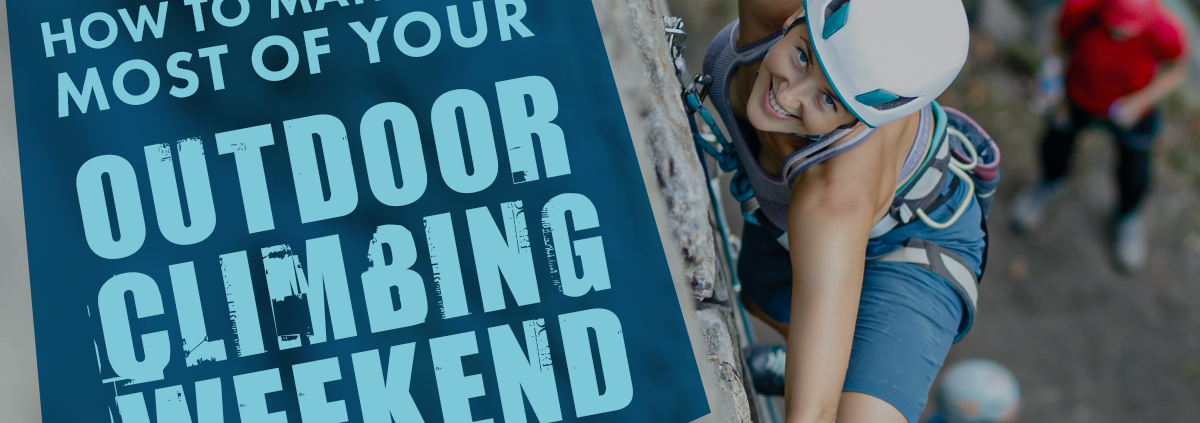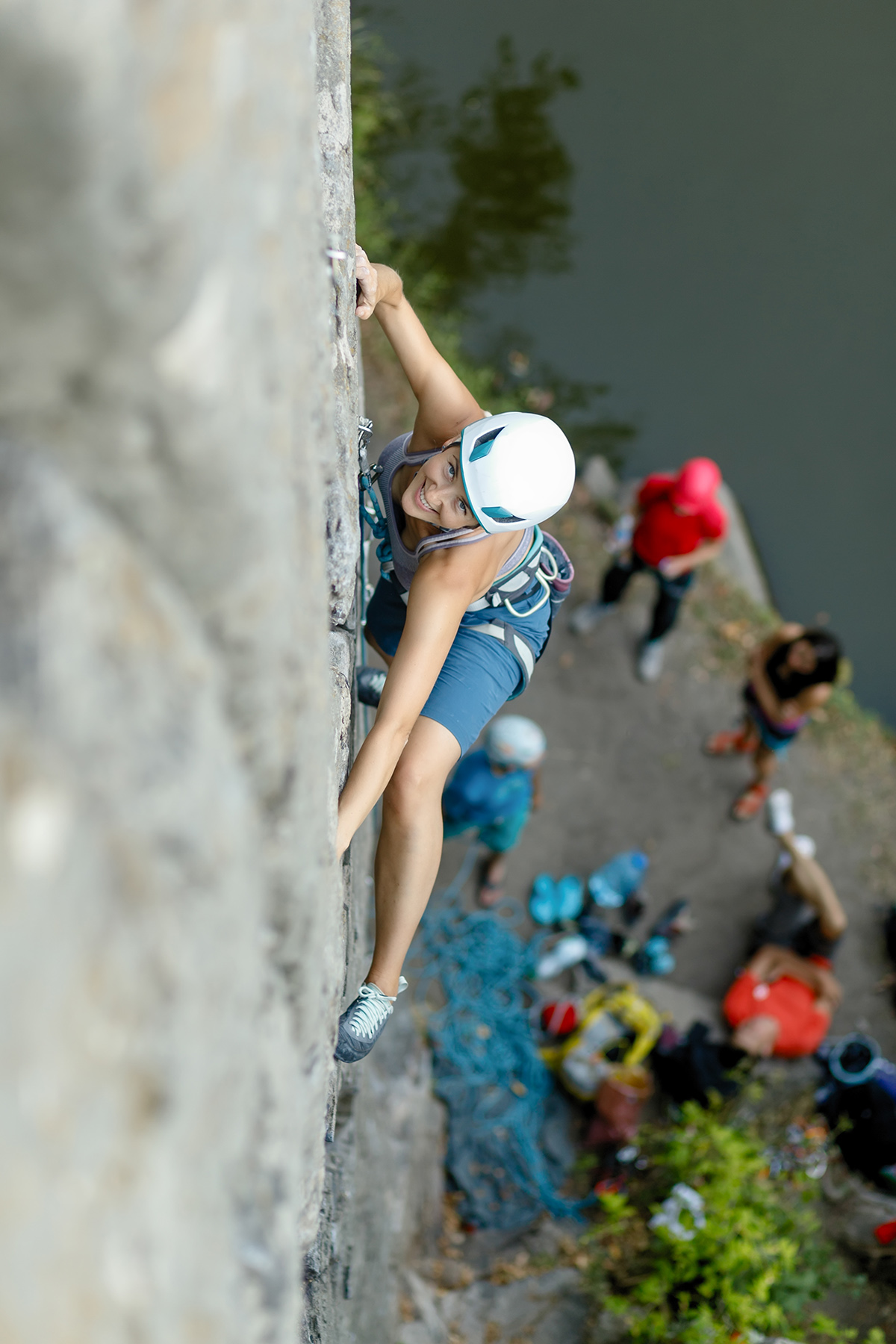How to Make the Most of Your Outdoor Climbing Weekend
You have time off from work, your friends have all booked a campsite or Airbnb, and you chose a great climbing area for your outdoor climbing weekend. No more fighting for space in the crowded gym during peak hours on the weekend. Instead, you’ll fight for your turn on the classics.
Discover why meticulous planning and a flexible mindset are crucial to making the most of your outdoor climbing weekend!
Researching The Best Climbing Areas Nearby
Selecting the right climbing destination begins with considering what’s closest to you and your skill level. Are you a beginner looking for well-bolted sport routes with easy access? Or are you a seasoned trad climber seeking multi-pitch adventures in remote areas? Regardless of your skill level, if you’re lucky enough to have options for weekend getaways, then you should use something like Mountain Project to help you decide where to go.
Timing is a critical factor in climbing. A route that’s perfect in spring could be scorching in summer or dangerously icy in winter. Research historical weather patterns, local climate reports, and recent trip reports from other climbers to stay informed before you go.
Popular climbing destinations can get crowded, especially on weekends and holidays. However, with the proper research, you can find less-traveled crags that offer equally rewarding climbs without the crowds, providing a more exclusive and adventurous experience.
Gear and Essentials You Can’t Forget
A successful climbing trip starts with reliable gear; make sure you don’t forget anything. Essentials include a harness, climbing shoes, a helmet, and a belay device. You’ll also want a rope. Depending on your style of climbing, you’ll either need quickdraws or trad gear.
Layering is key when climbing outdoors. Moisture-wicking base layers, an insulating mid-layer for warmth, and a durable, weather-resistant outer shell are excellent components for a well-rounded dressing.
Consider wearing sun protection, such as hats and UV-blocking shirts, when exposed to the sun. If you don’t think you’ll use them, pack gloves and a beanie for chilly belays. They’re small and easy to stuff into a climbing pack. Always prepare for unexpected weather shifts, even if the forecast looks stable.
You can’t forget the snacks! Pack nutrient-dense foods, such as nuts, jerky, energy bars, and fresh fruit. Lightweight dehydrated meals are a convenient option for longer trips in the backcountry.
Hydration. Hydration. Hydration. Carry enough water or a filtration system if natural sources are available. Electrolyte supplements can help maintain energy levels and prevent dehydration.
A well-stocked first aid kit is a non-negotiable part of any climbing trip. Include essentials like bandages, antiseptic wipes, blister pads, and pain relievers. A compact emergency blanket, whistle, and multi-tool can be lifesavers in unexpected situations. Consider carrying a personal locator beacon (PLB) if venturing into remote areas with limited cell service.
Making Your Basecamp Comfortable
If you opt for the camping option, you’ll know that a well-chosen campsite can significantly enhance your climbing experience. Look for flat ground, natural wind protection, and proximity to water sources, whether that’s a stream or a nearby water source.
A high-quality tent, warm sleeping bag (unless it’s unbearably hot where you’re going), and comfortable sleeping pad are must-haves for a good night’s rest. A lightweight stove, cooking utensils, and a headlamp make camp life more manageable when you only want to relax at the end of a long climbing day.
While a campfire adds ambiance, a compact stove is more reliable for cooking. Pre-prepared meals like burritos, pasta, and oatmeal keep meal prep simple. Wraps and sandwiches are also great for quick, no-fuss lunches. Remember always to store food securely to prevent wildlife encounters.
Following Leave No Trace principles helps protect these treasured climbing destinations, allowing future climbers to enjoy them too. Pack out all trash, use established trails, and minimize chalk use. Avoid disturbing wildlife and comply with local regulations regarding fires and waste disposal.
Maximizing Your Climbing Experience
A proper warmup is essential for any climbing day. Light cardio, dynamic stretches, and mobility exercises can help prevent injuries and enhance performance. Finger and wrist warmups are particularly important to avoid strains. Consider bringing a small crimp block and an exercise band to maximize the benefits of your warm-up.
Clear communication is essential for safety when climbing. Establish belay signals, confirm commands, and regularly check each other’s knots and gear. Trust and attentiveness between partners can prevent accidents and enhance the overall experience. A helpful tip is always to use your climber’s or belayer’s name when reciting commands.
Unwinding and Enjoying the Weekend Beyond Climbing
Many climbing areas offer breathtaking scenery beyond the rock walls. Take time to explore nearby trails, waterfalls, or views. A short hike can be the perfect way to cool down after a climbing session. Besides, you can’t climb the entire time, can you?
As you know, climbing is as much about community as it is about personal achievement. Connect with fellow climbers, exchange route tips, and share stories around the campfire. Networking can lead to new friendships and future climbing partners. You never know where your next outdoor climbing weekend will take you!




